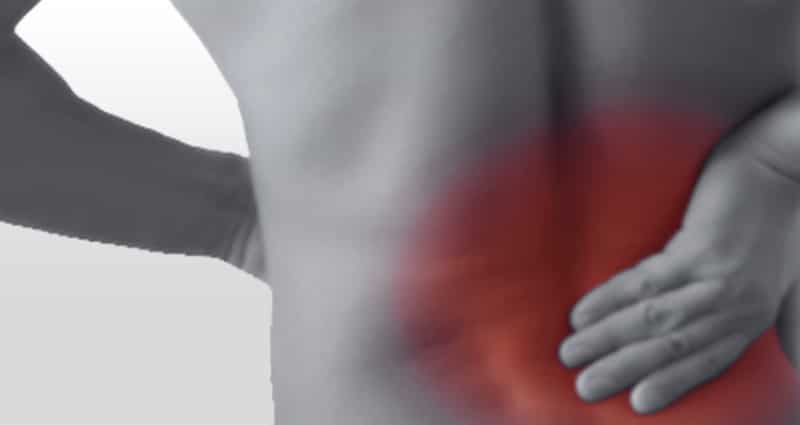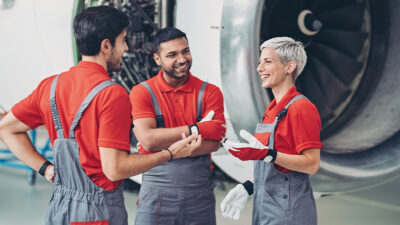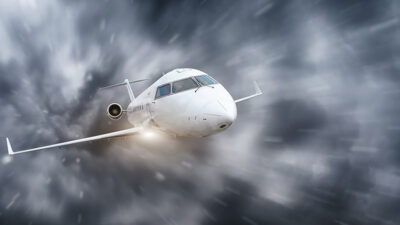Preventing Flight Crew Back Injuries

Lifting, bending, pushing and pulling – it’s all part of the job for most crew members. Unfortunately, such repetitive movements often translate to back injury, one of the most incapacitating and common work-related injuries.
Why do back injuries occur?
It is no wonder that back injuries are common among people who perform repetitive lifting and bending, especially considering the fulcrum effect. The lower back basically functions as the center of a seesaw, with the upper body and the load being lifted as one end. The lumbar muscles, and ligaments applying traction on the back, are the other end. The lower back’s musculoskeletal frame actually withstands nearly 10 times the actual weight of the object being lifted. As a result, disc injury and degeneration are common precipitants of back pain, along with bone spurs and the tearing of ligaments and muscles. Any process involving the anatomical components of the back – bones, discs, ligaments or muscles – may result in pressure on the nerve roots exiting the spinal cord and can create severe back pain.
Common causes of back injuries
The most common mechanisms of back injury can frequently be encountered in the aircraft environment: heavy lifting, twisting while lifting or holding a heavy load, reaching and lifting, lifting or carrying objects with odd shapes, working in awkward positions, sitting or standing for prolonged periods in one position, slipping on a wet floor and, occasionally, poor sleeping positions.
Preventing back injuries: proper techniques
Adaptation and improvisation of instinctive movements are the keys to minimizing and preventing back injuries in the aircraft environment.
When lifting a heavy object into the baggage storage area, crewmembers should:
- Keep feet shoulder-width apart and bend at the knees
- Squat down and hug the object to be lifted, keeping the spine straight when standing up
- Change directions by turning the entire body in the desired direction
Furthermore, when lifting carry-on bags, use only the arms while keeping the back straight. As the bag reaches the waist level, use one hand to hold the bottom and then use both arms to lift the bag.
When putting an object down, squat with a straight spine until reaching the floor with the load.
When pushing and pulling any luggage carts, crewmembers should:
- Push instead of pull since pulling can cause significant disc compression
- Maintain an erect posture with a straight spine when pushing or, when pulling is the only option, try not to bend or arch the lower back
When operating in an aircraft’s tight spaces, remember this advice:
- If bending is necessary, face the desired direction before bending and bend at the waist, limiting any simultaneous turning
- To turn to the side, turn the entire body in the desired direction and bend again at the waist
- When reaching, find a stable anchoring point with one arm and hand while reaching with the other hand. Balancing with feet alone, while the trunk muscles are tightened and twisted, can result in a pulled lower back muscle.
Everyday prevention measures
Any crewmember can take steps to prevent back problems and to improve posture. When sitting, adopt an upright position without slouching and develop a habit of holding in the belly. A protruding belly places undue load on the spine. Core muscle strengthening, along with improved cardiovascular endurance, regular stretching and a good diet, will also help minimize back injuries and allow for a healthier lifestyle.
This advisory is provided courtesy of MedAire, Inc. a Global Aerospace SM4 partner.

Flight departments around the world rely on MedAire, an International SOS company, to reduce their travel safety risks. Crews are trained on the resources to manage in-flight illness and injury with onboard medical equipment and telemedicine assistance. On the ground, passengers and crew have one resource for medical referrals; guaranteed payments for medical expenses; assistance with lost documents and prescriptions; online and e-mail travel advisories; evacuation support and a host of other services.
http://www.medaire.com/
© 2025 MedAire Worldwide. All Rights Reserved.
Next ArticleRelated Posts

Peer Support Programs: Transforming How Aviation Addresses Mental Health
While the industry has evolved in acknowledging these issues, stigma still impedes many from seeking available resources. Here, the significance of Peer Support Programs (PSPs) has been increasingly recognized. These initiatives offer a confidential haven where concerns can be openly discussed, free from judgment.

Understanding the Challenge of Turbulence-Related Injuries in Business Aviation
The challenge of managing air turbulence in business and private aviation is becoming increasingly evident due to the growing number of turbulence-related incidents affecting aircraft operators across the industry.

